If you’re investing in home automation or electronic home ecosystems, you’ve probably looked into smart thermostats and noted the high price. Presumably, they perform so well because of the hardware and software, so many believe that it makes the startup cost worth it — but is it true? Why are smart thermostats so expensive?
Smart thermostats are expensive because they contain a lot of expensive wiring, sensors, and electronic chips. These parts let a smart thermostat connect to home WiFi and smart devices as well as to detect if you’re home. They’re more expensive to manufacture, so they’re more expensive to buy.
In this article, I’ll cover the capabilities and features of smart thermostats, why they’re so expensive, whether or not they save money, and how to decide if a smart thermostat is right for you. Read on to learn more.
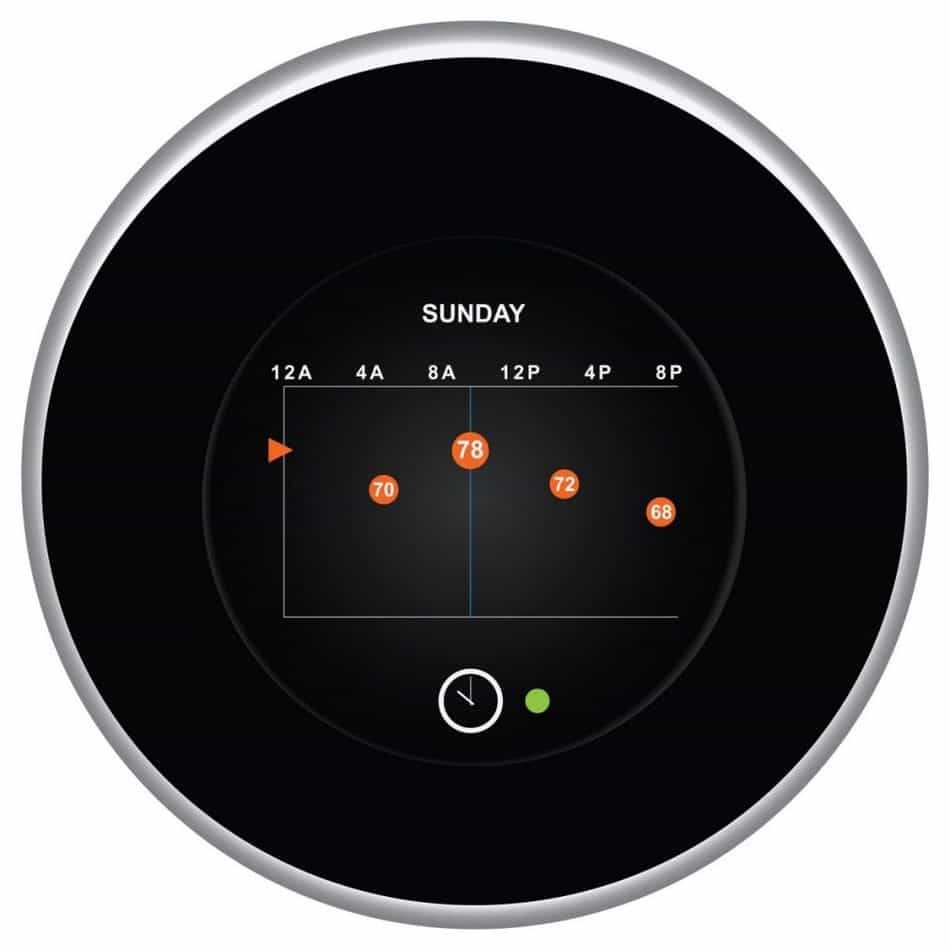
What Can Smart Thermostats Do?
Smart thermostats can be controlled remotely with smart devices like phones, tablets, and computers to modify the temperature of your home. You can schedule temperature changes to happen at certain times. These devices are compatible with home automation systems like Google Home and Amazon Alexa.
For example, with a smart thermostat, you can make it automatically crank the A/C or heat only when you’re home – according to the season, of course. In the summer you probably want to save money on A/C, so you can turn the thermostat off when you’re at work. You can tell the thermostat when you get home from work, and set it to 70°F (21.11°C), or whatever temp is comfortable for you.
What makes smart thermostats attractive is that you can set your schedule and then forget about having to mess with the thermostat – as long as you live within a set schedule.
What Other Features Do Smart Thermostats Have?
Some smart thermostats offer additional features, such as built-in virtual assistants, records of your energy use, information on which settings save on energy costs, and the ability to record and learn your heating and cooling habits over time.
Different models of smart thermostats have varying features, some more useful than others. The ecobee4 Thermostat (available on Amazon.com) has the Amazon Alexa virtual assistant built-in; this makes it ideal for those invested in the Alexa ecosystem.
The Google Nest Learning Thermostat (available on Amazon.com) is an interesting smart thermostat that records and learns your heating/cooling habits. Over time, the Nest Learning Thermostat adapts itself to your unique needs, purportedly without needing to be programmed. It also displays a leaf symbol when you select a temperature that helps save you money on electricity.
Most smart thermostats these days collect your energy usage habits into convenient records that you can view. Typically you can view this monthly or yearly, in order to better understand how your household uses electricity during which times.
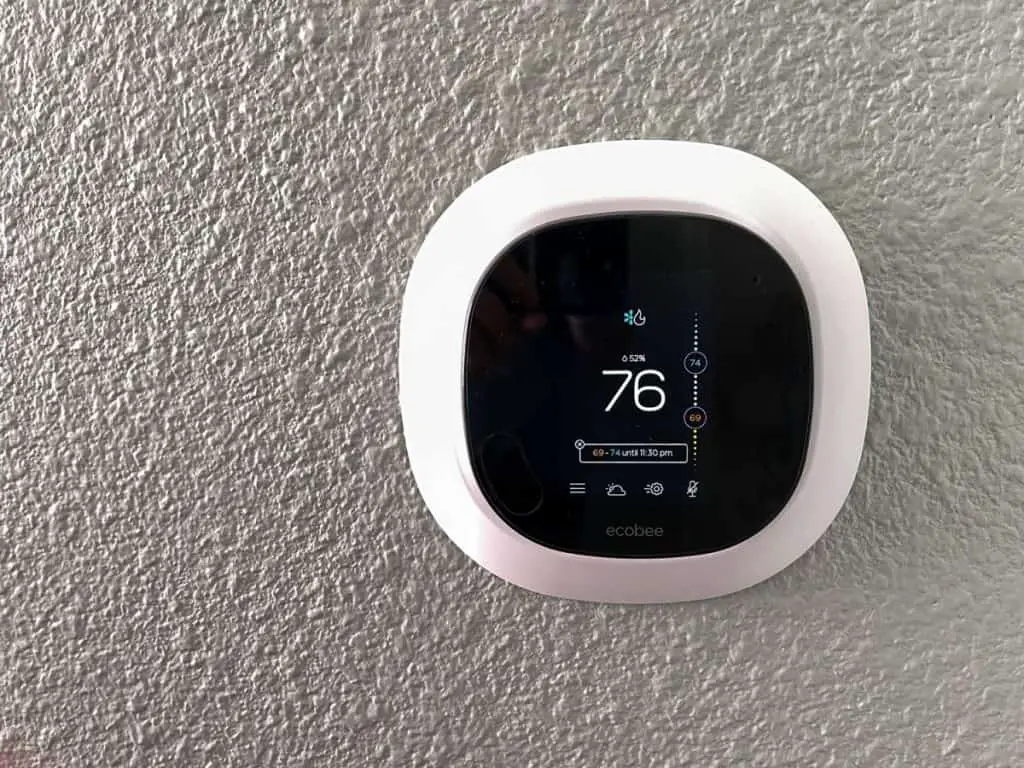
Smart Thermostat Requirements
Smart thermostats need you to meet some basic requirements. Generally, any modern 24v HVAC system will be compatible with most smart thermostats out there. In addition, you’ll need WiFi – this is very important because the thermostat needs WiFi to connect to your smart devices.
Why Are Smart Thermostats So Expensive?
As we’ve discussed above, smart thermostats offer several different features, including record keeping, “learning” your heating and cooling habits, and even suggestions to help you save money on energy costs.
Smart thermostats are expensive because they’re complex. They offer WiFi connectivity, motion sensors, and other intricate hardware and software. Additionally, they connect to apps to store information related to your energy use. The high cost is because these devices are essentially tiny computers.
With greater complexity in electronics comes a higher cost to the consumer. A simple dial thermostat doesn’t cost as much as a smart thermostat because it doesn’t have all the wires and computer chips that make a smart thermostat work, nor does it offer the same features.
Do Smart Thermostats Save Money?
One of the most attractive qualities about smart thermostats, and the most advertised, is that they allegedly save you money. This is true, to an extent, but it’s no black magic – smart thermostats are simply programmable thermostats that use other advanced technologies like geofencing, scheduling, and motion sensing to decide when to heat or cool.
Smart thermostats can save money—programmable features allow you to keep the home at a steady temperature to save on heating and cooling costs. They also allow you to schedule temperature changes based on your routine (i.e., lowering the temperature at night while you’re asleep), thus saving money.
However, heating and cooling cost money, period. There’s no way around that, but where smart thermostats save money is by cutting out excessive and unnecessary heating and cooling. If you already micromanage your thermostat, the sad truth is that you may not notice a whole lot of savings when transitioning to a smart thermostat. You can only avoid so much unnecessary cost, after all.
For optimal energy savings, you would either have your thermostat always set to the same temperature or already have a programmable thermostat you’re not making use of.
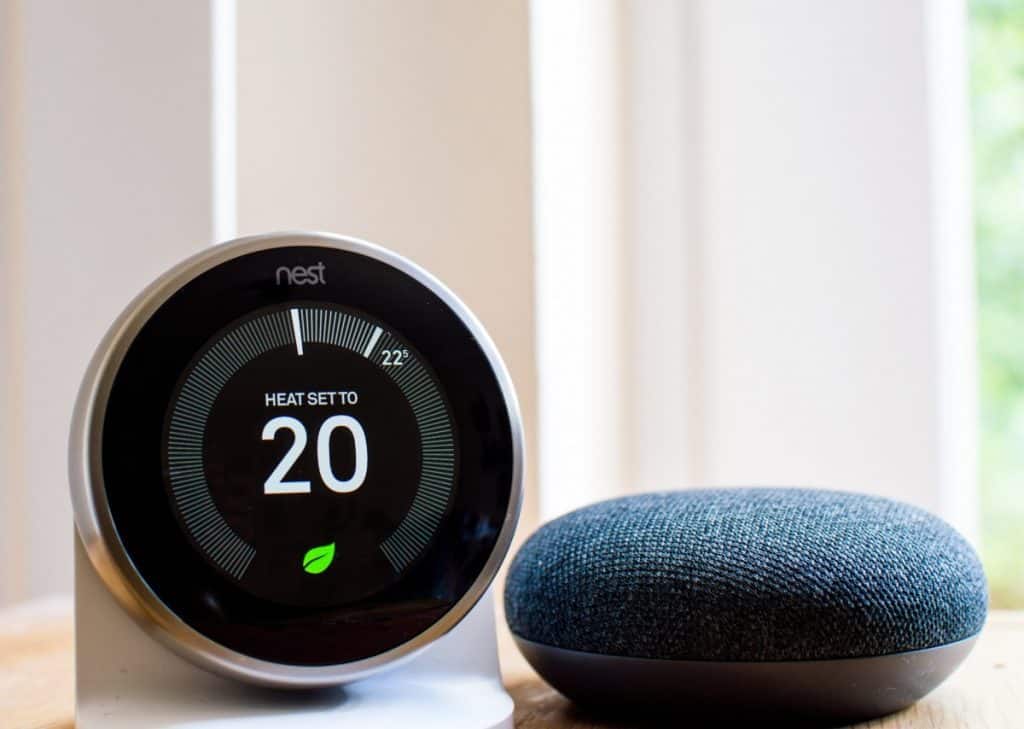
How To Save Money With a Smart Thermostat
The trickiest part of saving money with a smart thermostat is doing it in a way that doesn’t sacrifice your comfort or convenience for the sake of a few bucks every month. Those savings won’t mean much if you’re freezing or dying of heatstroke, right? Well, let’s look at exactly how you use a smart thermostat to save money while staying cozy.
Tell It When You’re Home
While some models of smart thermostats can tell when you’re home by using motion sensors, not all are equipped with that function. In that case, you have to program the thermostat with the times you’ll be out of the house – this is most useful if you have a consistent work schedule. For example, if you work from 9 am to 5 pm, tell the thermostat to only turn on at 5 pm, when you get off work.
Take Advantage of Motion Sensors and Geofencing
Many smart thermostats on the market use geofencing tech to connect to your smartphone and determine if you’re home. If you’re, the thermostat knows to set the temperature accordingly – warm in the winter, cool in the summer, etc.
Motion sensors allow the thermostat to control the temperature in various areas of the home. It works like this: when you’re active in your home, the motion sensors know you’re awake and at home. When you’re asleep or away from home, the motion sensors know that too, because you aren’t walking past it every so often.
Admittedly, the motion sensor thing can be a little fickle. For example, if you didn’t walk past the first Nest thermostat often enough, it would think the space was unoccupied and stop heating/cooling. It also isn’t that great if you’re a couch potato – the thermostat can’t tell if you’re home if you get back from work and just veg out in front of Netflix for four hours.
Most newer models have generally fixed this problem, sometimes including door or window sensors as part of the package. Other thermostats can integrate with your home’s security system and use those sensors instead.
Diagnostic Tools Keep Your HVAC System Healthy
Many smart thermostats today include diagnostic tools, such as the ability to alert you if there are problems with your HVAC system – it can tell you when to change your air filters, display your energy consumption, and more.
By reminding you to perform maintenance and noticing irregular activity indicative of problems, smart thermostat diagnostic tools urge you to fix problems before they can turn into bigger problems. In a way, this saves you money in the long run on HVAC maintenance.
The Nest smart thermostat can notice unusual patterns of activity and alert you. The example it uses is if your home is taking longer to heat up than usual, chances are that something is wrong with the system. Therefore, the thermostat will recommend you hire a professional to diagnose and fix the problem. It can’t really tell what the issue is, just use patterns within its recorded data to notice anomalies.
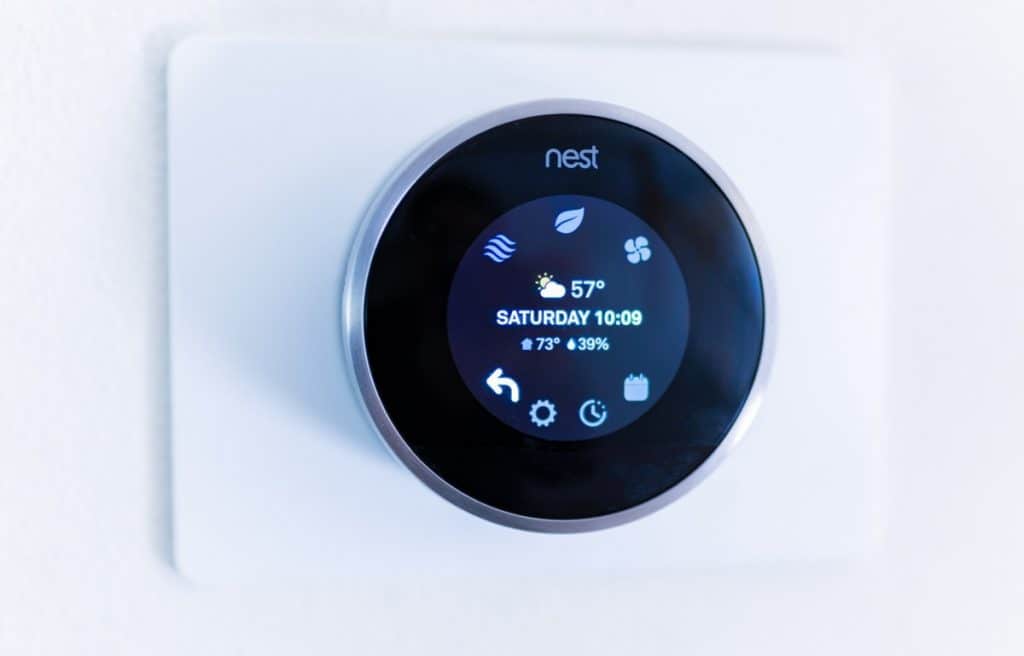
Integrate Into Your Smart Home
This is one of the biggest selling points with smart thermostats – you can connect them to your smart home ecosystem and control them with your smart devices. You can tell your Echo Dot, for example, to adjust the temperature, and it can connect to your ecobee thermostat to do so.
Conversely, the ecobee 4 has the Alexa voice assistant built-in. This means you don’t even need a pre-existing Alexa device; you can just speak to the thermostat to control it.
Disadvantages of Smart Thermostats
As with any electronic device, smart thermostats have their drawbacks. When making an informed buying decision about any device, you need to know the cons to weigh against the pros.
Compatibility Issues
Older HVAC systems and nonstandard heating/cooling systems may not be compatible with smart thermostats. At a glance, the Nest thermostat isn’t compatible with high-voltage HVAC systems, systems with proprietary wiring, millivolt heaters, or solid fuel heating. If your home uses any of those, you may want to look into a regular thermostat.
You Don’t Need It if Someone Is Always Home
The appeal of smart thermostats is that you can set it to turn off under certain circumstances or control it from your phone when you’re away. In this day and age where working from home is becoming more prevalent, smart thermostats are a little redundant – you can just adjust the thermostat by hand when you feel the need.
Smart Thermostats Are Hackable
Anything connected to your home network is hackable. If someone hacks into your smart thermostat, they could gain access to your home network and all your other devices as well. Cyber security at home is a major consideration when adding any smart device to your house.
They’re Expensive
This is obvious when you’re looking at smart thermostats side-by-side programmable and old-school thermostats – the smart ones usually go for several times as much as the others! If you’re not planning on making substantial use out of it, the smart thermostat may end up even more expensive than the others!
Programming May Be Complex
If you’re not a techie, programming a smart thermostat can be a little daunting. You need to connect the thermostat to the internet and smart home systems, which isn’t always intuitive. If you want something with minimal fiddling and fuss, a smart thermostat may not be for you.
Installation May Require a Professional
Smart thermostats usually have unique wiring needs. In most cases, you can simply wire the thermostat to the existing wiring system of your old thermostat. However, even that may be too complex for a novice. If you’re not familiar with electrical wiring, you may need to hire a professional, which isn’t cheap or convenient.
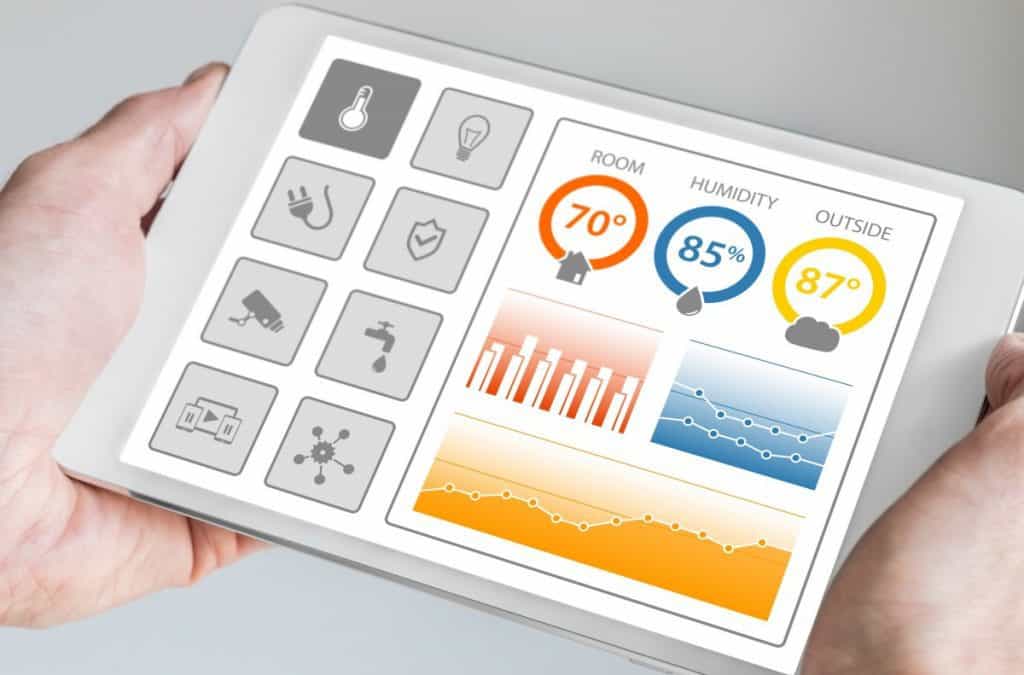
Is a Smart Thermostat Right for Me?
Smart thermostats, like every electronic, have an ideal market. Not everyone will need or make use of all its features, and that’s okay – you should only buy a smart thermostat if it adds value to your life.
A smart thermostat may be right for you if:
- You want to control your home’s temperature remotely.
- You want to make use of voice control features.
- You’ve invested in an Amazon or Google smart home system.
- You hate old dial thermostats.
- You enjoy new electronics.
- You have a consistent schedule.
On the other hand, it’s important to recognize if a smart thermostat isn’t right for you. This way you can avoid unnecessary purchases and future headaches.
A smart thermostat may not be for you if:
- Someone is always at home.
- You want a simple way to control temperature.
- You don’t want to fiddle with screens and apps.
- Your HVAC system isn’t compatible with smart thermostats.
- You don’t have WiFi at home.
What To Look For
So, you’ve decided you need a smart thermostat? Well, there are some things you should look out for in a prospective smart thermostat before you hit that order button.
What to look for in a smart thermostat:
- Geofencing. This helps a smart thermostat become even smarter, using your phone’s presence to automatically adjust your home’s temperature to a comfortable one.
- Motion sensors. Just like geofencing, motion sensors make a smart thermostat more convenient and well, smart. Without them, it’s really just a programmable thermostat.
- Compatibility with your smart home. If you’re invested in an Alexa smart home ecosystem, for example, it doesn’t make sense to buy a Nest thermostat, and vice versa.
- C-wire requirement. Smart thermostats that siphon power from the HVAC’s R (power) wire can cause damage to the entire system. A C-wire is a dedicated power source for the thermostat that poses no risk to the HVAC system as a whole.
Final Thoughts
Smart thermostats are expensive because of all the complex systems within them. For a busy tech-minded professional, a smart thermostat can be just the thing to keep a home comfortable from a distance, and save a few bucks on energy costs in the bargain!

